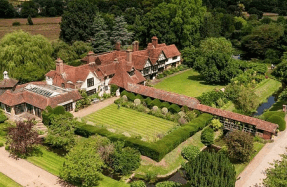Britain’s brilliant bogs

IN the reign of Henry VIII, a new word became established in our language. The English adapted it from bogach, ‘the soft one’, the term for sodden peat-land in both Scottish Gaelic and Irish. The new word was, of course, ‘bog’. Within a few decades, it supplanted what, for more than 600 years, had been England’s standard name for both the peaty habitat and the plant that gave rise to it: ‘moss’.
That moss was, and still is, springy, sponge-like Sphagnum. Britain is home to 34 Sphagnum species, an impressive 10% of the world total for this genus; of these, five are especially important in making and maintaining our peatlands. Often, bogs are composed of several Sphagnum species, each with distinctive characteristics that fit it to a particular spot or niche, such as a peak or a hollow. Collectively, these communities of cousins become capable of wonders, transforming vast, acidic and saturated barrens into the shin-high equivalents of rainforest, and ensuring
You’re reading a preview, subscribe to read more.
Start your free 30 days



